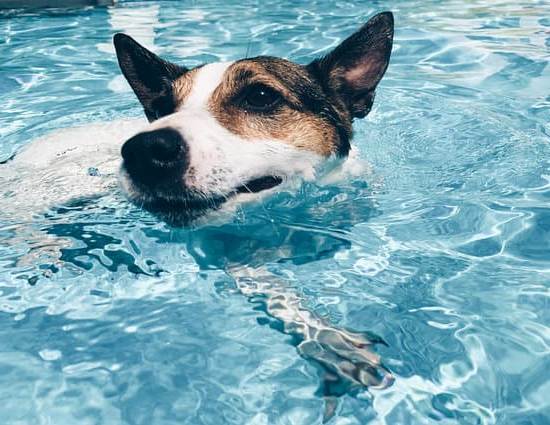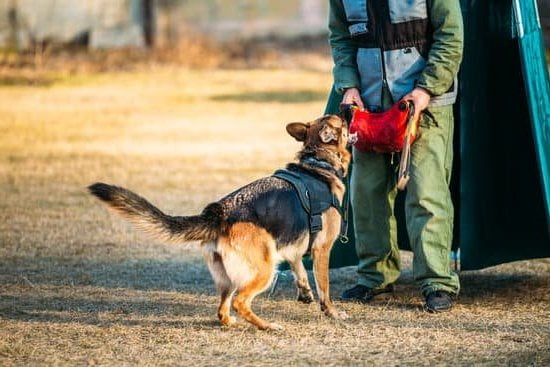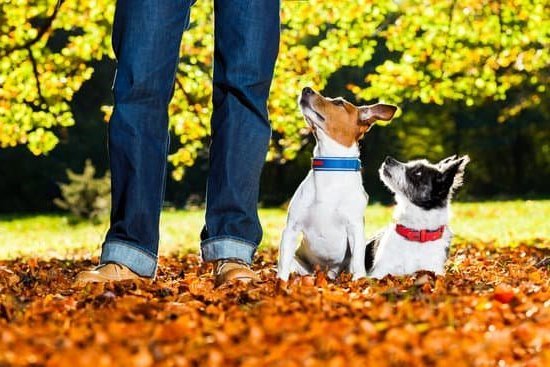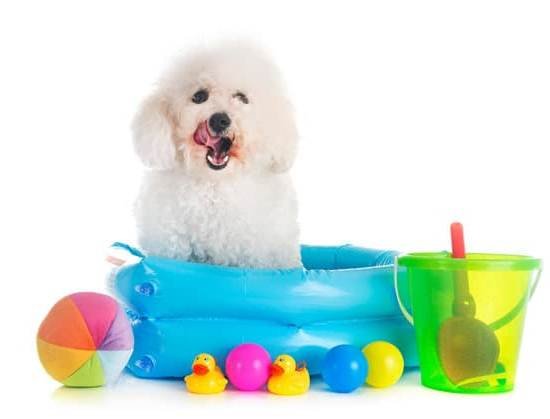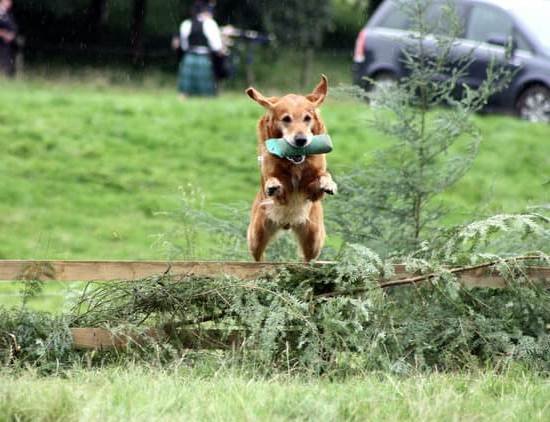House training a dog is a crucial aspect of responsible pet ownership. It not only helps to maintain a clean and odor-free home, but it also sets the foundation for a healthy and happy relationship between you and your furry friend. In this article, we will explore the various aspects of house training, from understanding the basics to dealing with specific challenges that may arise along the way.
Understanding the basics of house training is essential in ensuring a smooth and successful process. From setting up a consistent routine to implementing positive reinforcement techniques, there are several key factors to consider when embarking on this journey with your canine companion. By establishing clear guidelines and expectations, you can effectively communicate with your dog and facilitate their learning process.
Once you have mastered the fundamentals of house training, it is important to be aware of common mistakes that pet owners often make. Avoiding these pitfalls can save you time and frustration in the long run, while also contributing to a more efficient house training experience for both you and your dog.
Additionally, knowing how to handle accidents during the house training process and addressing specific challenges that may arise are essential components of achieving long-term success in maintaining a well-behaved and well-adjusted pet.
Understanding the Basics of House Training
House training a dog is an essential part of a pet owner’s responsibility. It not only ensures that your home remains clean and odor-free, but it also provides a sense of security and discipline for your furry friend. Understanding the basics of house training is the first step towards effectively teaching your dog appropriate behavior inside the house.
The key to successful house training is understanding your dog’s natural instincts. Dogs are den animals by nature, so they prefer not to soil their living space. This makes them more receptive to being trained to eliminate outside or in a designated indoor area. Understanding this basic instinct can help you tailor your approach to house training your pup.
One effective technique for house training is crate training. By utilizing a crate, you can establish boundaries for your dog and facilitate a consistent routine for potty breaks. This helps prevent accidents inside the house and teaches the dog to hold their bladder until they are brought outside. Positive reinforcement is also crucial in house training as it encourages good behavior and helps create a strong bond between you and your pet.
| Aspect | Information |
|---|---|
| Section Title | Understanding the Basics of House Training |
| Main Point 1 | Dogs are den animals by nature and prefer not to soil their living space. |
| Main Point 2 | Crate training can be an effective method for establishing boundaries and routines. |
Setting Up a Consistent Routine for House Training
Setting up a consistent routine is crucial in successfully house training a dog. Dogs thrive on routine and structure, so establishing a schedule for feeding, bathroom breaks, and playtime can greatly aid in the house training process.
Feeding Schedule
One of the first steps in setting up a consistent routine for house training is to establish a regular feeding schedule for your dog. By feeding your dog at the same times every day, you can predict when they will need to go outside to relieve themselves. This helps to minimize accidents in the house and allows you to better anticipate their bathroom needs.
Bathroom Breaks
In addition to a feeding schedule, it’s important to create a routine for taking your dog outside for bathroom breaks. Puppies, in particular, have small bladders and may need to go out more frequently than adult dogs. Take them out first thing in the morning, after meals, before bedtime, and several times throughout the day. Consistency is key in reinforcing the desired behavior of going outside to do their business.
Supervision and Crate Training
When you’re unable to watch your dog closely indoors, consider using a crate or confining them to a small area where accidents are less likely to occur until they are fully house trained. The use of crates can also help with teaching bladder control and preventing destructive behaviors when you’re not around. However, it’s important that the crate is not used as punishment and that your dog has plenty of positive associations with it.
By following these tips for setting up a consistent routine for house training, you can greatly improve the success of teaching your dog where and when they should go potty.
Positive Reinforcement Techniques for House Training
House training a dog can be a challenging process, but using positive reinforcement techniques can make the experience more enjoyable for both you and your furry friend. Positive reinforcement involves rewarding your dog for good behavior, which can help them understand what is expected of them during the house training process.
One of the most effective positive reinforcement techniques for house training is using treats as a reward. When your dog successfully goes to the bathroom outside or in their designated indoor spot, immediately give them a small, tasty treat as a reward. This helps them associate going to the bathroom in the right place with receiving a reward, making them more likely to repeat this behavior in the future.
In addition to treats, verbal praise and affection can also be powerful forms of positive reinforcement for house training. Whenever your dog goes to the bathroom in the appropriate place, make sure to enthusiastically praise and pet them. Dogs thrive on their owner’s approval and attention, so this positive reinforcement will encourage them to continue exhibiting good bathroom habits.
| Positive Reinforcement Techniques | Benefits |
|---|---|
| Using treats as rewards | Associating good behavior with receiving a reward |
| Verbal praise and affection | Encourages continued good bathroom habits through owner’s approval and attention |
Common Mistakes to Avoid in House Training
House training a dog is an essential part of their development and overall well-being. It not only creates a cleaner and more harmonious living environment for both the dog and its owner but also helps in building a strong bond between them. In order to successfully house train a dog, it is important to understand the basics of this process, set up a consistent routine, and use positive reinforcement techniques.
One common mistake to avoid in house training is punishing your dog for accidents. Punishment can lead to fear, anxiety, and even aggression in dogs, making the house training process even more challenging. Instead, focus on using positive reinforcement techniques such as giving treats, praise, and rewards when your dog eliminates in the designated area. This will create a positive association with going to the bathroom in the right place.
Another mistake to avoid is inconsistency in the routine. Dogs thrive on structure and routine, so it’s important to take them out at the same times every day – after waking up, after meals, before bedtime, and periodically throughout the day. By doing so, you are teaching your dog when and where they should go to the bathroom. Using consistency will help reinforce good habits and accelerate the house training process.
Additionally, one common mistake is not supervising your dog enough during the house training process. Without proper supervision, it’s easy for accidents to occur without you even realizing it.
When you’re unable to supervise your dog directly, consider using baby gates or crates as tools to limit their access within the home until they are fully house trained. By avoiding these common mistakes in house training a dog, you can set them up for success in learning where it’s appropriate to eliminate.
Dealing With Accidents During the House Training Process
Understanding Normal Accidents
When it comes to house training a dog, accidents are bound to happen, especially in the beginning stages of the process. It’s important to understand that this is a natural part of the learning curve for your pet. Young puppies, in particular, have smaller bladders and may not yet have full control over their bodily functions. It’s crucial to remain patient and understanding during this phase and not get frustrated with your pet.
Immediate Response to Accidents
When accidents do occur, it’s important to react appropriately. Do not scold or punish your dog for the accident as this will only cause fear and confusion. Instead, calmly clean up the mess using an enzyme-based cleaner to fully remove any scent that might attract your dog back to the same spot. This step is crucial as dogs are more likely to repeat accidents in areas where they can smell previous incidents.
Adjusting Your Training Approach
If accidents become a frequent occurrence despite consistent training efforts, it may be necessary to re-evaluate your approach. Consider if you need to adjust your routine, increase bathroom breaks for your dog, or provide more supervision and confinement when indoors. Additionally, consulting with a professional trainer or behaviorist can offer valuable insight into how to address specific issues that may be causing recurring accidents.
By understanding normal accidents, responding appropriately when they occur, and adjusting your training approach as needed, you can effectively navigate through this challenging aspect of the house training process.
Troubleshooting Specific House Training Challenges
Dogs, like humans, can have unique attitudes and behaviors that may present challenges during the house training process. It is important for owners to be patient and understanding as they work through these specific challenges with their pet. Here are some common troubleshooting tips for specific house training challenges:
- Submissive or Excitement Urination: Some dogs may exhibit signs of submission or excitement by urinating when they greet people or are being scolded. This behavior is not always related to inadequate house training but can be addressed with specific techniques such as avoiding direct eye contact, allowing the dog to approach visitors calmly, and using positive reinforcement for calm behavior.
- Marking Behavior: Dogs, especially unneutered males, may engage in marking by urinating in specific areas to establish their territory. To address this issue, it is important to supervise the dog closely, clean any marked areas thoroughly with an enzymatic cleaner, and consider neutering if the behavior persists.
- Fear or Anxiety-Related Accidents: Some dogs may have accidents indoors due to fear or separation anxiety. Owners can help these dogs by creating a safe and comforting environment at home, gradually desensitizing them to triggers of anxiety, and providing mental and physical stimulation through activities such as puzzle toys and regular exercise.
By understanding the underlying reasons for specific house training challenges and implementing targeted strategies, owners can effectively address these issues while continuing to reinforce positive bathroom habits in their dogs. Consistency, patience, and understanding are key factors in successfully troubleshooting these challenges as part of the overall house training process.
Long-Term Maintenance of House Training Success
In conclusion, house training a dog is an essential part of responsible pet ownership. It not only helps to maintain a clean and orderly living space but also ensures the comfort and well-being of your furry companion. By understanding the basics of house training and setting up a consistent routine, dog owners can successfully teach their pets appropriate bathroom behavior.
Positive reinforcement techniques play a crucial role in the house training process. Praising and rewarding the dog for good behavior can help them learn more quickly and effectively. Additionally, avoiding common mistakes such as punishing accidents or not being consistent with the routine can make the house training experience smoother for both the owner and the dog.
Although accidents are bound to happen during the house training process, it is important to remain patient and avoid getting frustrated with your pet. Learning how to handle these accidents calmly and effectively will ultimately lead to success in house training.
Remember that each dog is unique, so being adaptable and troubleshooting specific challenges that arise is key to achieving long-term maintenance of house training success. With dedication, patience, and consistency, any dog owner can successfully house train their pet.
Frequently Asked Questions
How Do You Stop a Dog From Peeing and Pooping in the House?
Stopping a dog from peeing and pooping in the house requires consistency, patience, and positive reinforcement. You should take your dog outside frequently, especially after meals or naps, and praise them when they go potty outside.
How Long Does It Take to Housebreak a Dog?
The time it takes to housebreak a dog can vary depending on the breed, age, and individual temperament of the dog. However, with consistent training and positive reinforcement, most dogs can be fully housebroken within 4-6 months.
What Is the Proper Way to House Train a Dog?
The proper way to house train a dog involves establishing a regular routine for feeding, potty breaks, and exercise. When your dog eliminates outside, praise them and offer treats as positive reinforcement. It’s important to closely supervise your dog indoors and use crate training as needed to prevent accidents.

Welcome to the blog! I am a professional dog trainer and have been working with dogs for many years. In this blog, I will be discussing various topics related to dog training, including tips, tricks, and advice. I hope you find this information helpful and informative. Thanks for reading!

